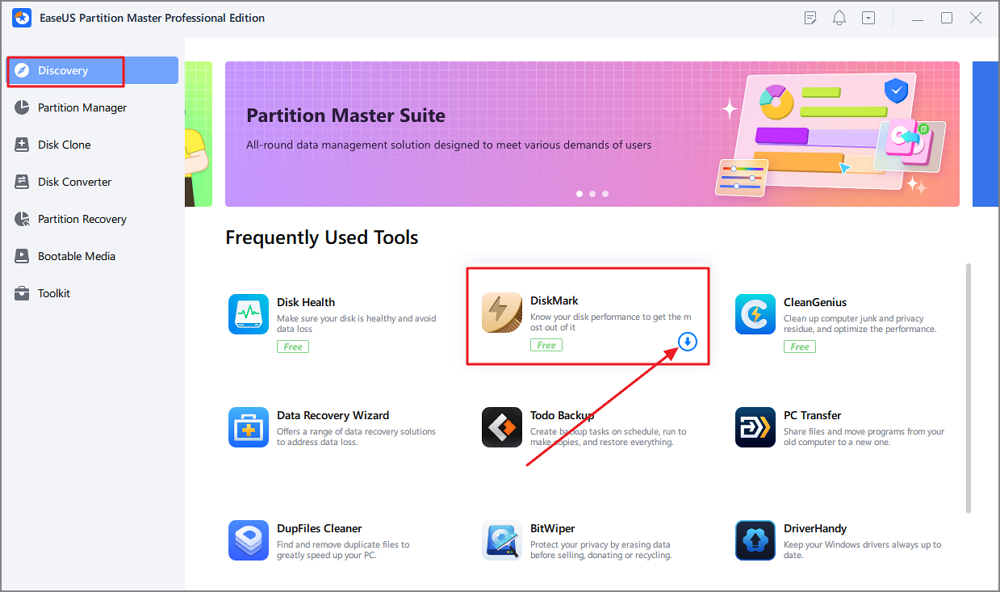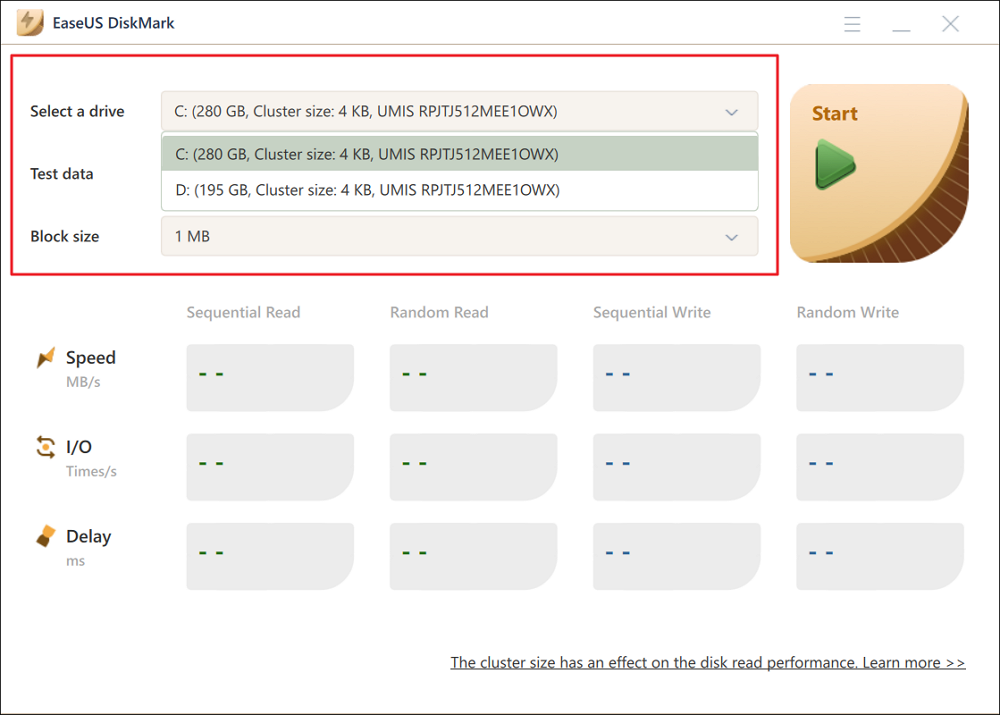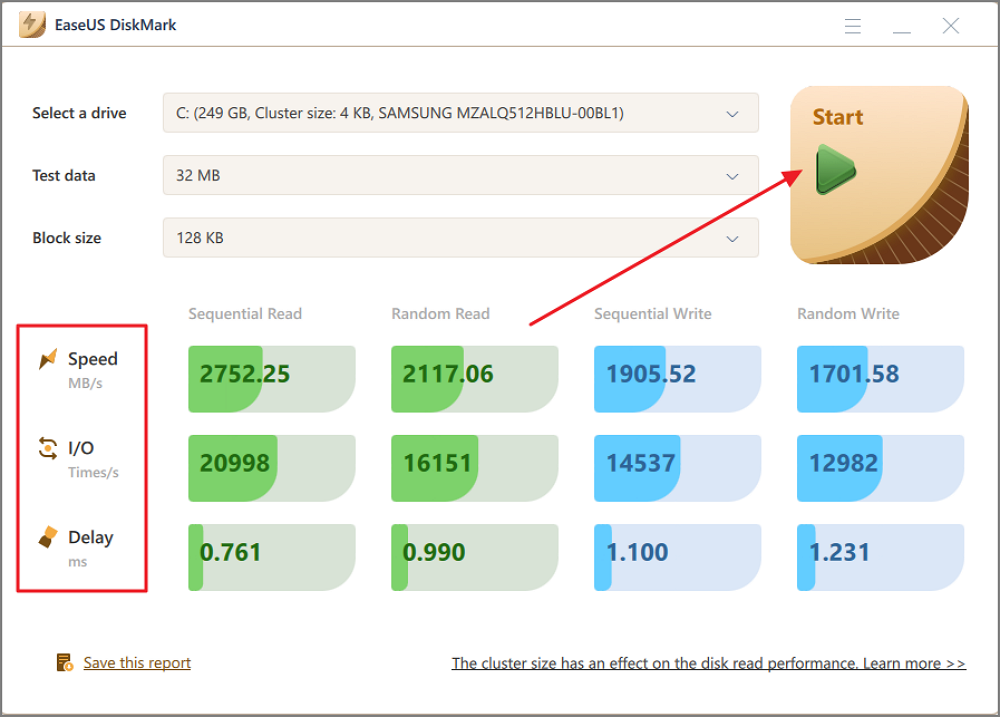Start Your Free Trial!
Sign up to our newsletter, stay updated on news and exclusive offers from EaseUS. Don't worry, if you change your mind, you can unsubscribe at any time, free of charge. We value your privacy (Privacy Policy).
Page Table of Contents
How to Test SSD Read/Write Speed on Windows 10/11 - 4 GuidesHOT
What Is a Good SSD Read/Write SpeedHOT
ConclusionHOT
About the Author
Hot Topics
Updated on Jul 30, 2025
Continue reading the article from EaseUS Software to get more about a good SSD read/write speed and how to test SSD read/write speeds in your system.
Just upgraded to an SSD, but still feel your computer is lagging (from r/computers)? Or maybe your game loading times aren't as fast as expected (r/techsupport)? Many users assume their SSD is performing at peak speed—but that's not always the case. Factors like a slow SATA interface, background processes, or a failing drive can silently drag down performance. An SSD speed test is the only way to confirm whether it's delivering what it promised.
How to check the read and write speed of SSD? To test your SSD's read and write speed, you can use EaseUS Partition Master, Task Manager, command prompt lines, or Blackmagic Disk Speed Test. Check the table below and select a tool for your SSD speed test.
| Comparison | EaseUS Partition Master | Task Manager | Command Prompt | Blackmagic Disk Speed Test |
|---|---|---|---|---|
| Easy to Use |
⭐⭐⭐⭐⭐ |
⭐⭐⭐ | ⭐⭐ | ⭐⭐⭐⭐ |
| Compatibility | Windows and macOS | Windows | Windows | Mainly for SSD speed test on Mac |
| Best for | Beginners and advanced users | Beginners | Advanced users and IT pros | Mac users |
| Accuracy | Reliable, consistent |
Very rough estimation |
Accurate but raw | High for large-file workflows |
Summary:
Check below to see how to use the EaseUS Partition Master tool step by step to test SSD read/write speeds. You will also find a tutorial for using the task manager below if you only want a general idea of how well your SSD is performing.
EaseUS Partition Master is a trustworthy application you can find online to test SSD read and write speeds. The software offers a "Disk Mark" feature to make it easy to test your Windows PC's SSD read/write speed. Plus, the user-friendly interface makes it easy for even a novice user to navigate and operate the tool efficiently.
Test the read/write speeds of your SSD using this free SSD benchmark tool with the steps below:
Step 1. Launch EaseUS Partition Master. And click the download button to activate the "DiskMark" feature under the "Discovery" section.

Step 2. Click on the drop-down box to choose the target drive, test data, and block size.

Step 3. Once everything is configured, click "Start" to begin the disk test. Then, you can see the Sequential or Random read/write speed, I/O, and Delay data.

The SSD benchmark tool will let out an alert if your SSD read/write speed is lower than the standard. Follow the tips (from r/Windows) below to make your SSD faster:
After testing the SSD read and write speeds, you can also use the additional features EaseUS Partition Master has to offer:
The Partition Master app also lets you check SSD speed and the drive health for any errors or issues with your drives and ensures your SSD runs in peak condition. Therefore, download the EaseUS Partition Master tool, test your SSD read and write speed on your Windows PC.
Task Manager is an awesome built-in tool to help you get an overview of your system hardware. You can use it to get a basic insight into your SSD's status. You won't be able to check detailed SSD data, but Task Manager is still great for a quick overview of your storage drives.
Here is how you can test SSD read/ write speed in Windows 10/11 using Task Manager:
Step 1. Right-click on the "Task Bar" on your PC and select "Task Manager."
Step 2. Click on the "Performance" tab in the "Task Manager" window.

Step 3. Now, from the left column, choose your disk. It will show the read and write speeds of your SSD.
You can now determine the speed from here, but you might notice that the data is dynamic and fluctuates depending on the programs running in the background. So, it is challenging to pinpoint the precise state.
If you want precise information, you can use the 1st Guide above. EaseUS Partition Master can give you more detailed data as the video shows below:

Read Also:
You can use Command Prompt to check SSD read/write speed without downloading applications on your PC.
Follow these steps:
Step 1. Press the Windows and S keys at the same time to launch the search window. Then type "cmd" in the search box.
Step 2. Right-click Command Prompt under the Best Match, then select Run as administrator from the menu.
Step 3. Next, type "winsat disk -drive c" and press Enter to test SSD read/write speed. (You need to replace "c" with your drive letter.)
Step 4. Once done, you can see your SSD speed clearly in the Command Prompt window.
How to check SSD Speed on Mac? Blackmagic Disk Speed Test is a pretty good choice. Let's show how to check SSD speed using Blackmagic Disk Speed Test.
Step 1. Search for Blackmagic Disk Speed Test on the Mac App Store > download it.

Step 2. Find the app in your Applications folder or Launchpad > open it.
Step 3. Click on the settings gear icon located in the top left corner.
Step 4. Locate the drive you want to test > click START in the middle of the Disk Speed Test window.

The app will begin writing and reading data, displaying real-time results for both read and write speeds. Alternatively, you can turn to EaseUS Partition Master for Mac, which allows you test SSD speed on macOS.
SSD write speed describes how quickly data is recorded into the storage drive, whereas SSD read speed determines how quickly data is read from the drive. Your SSD speeds may vary depending on the interface used and the type of manufacturing.
Check this table to learn the normal speed of your SSD:
| SSD Type | Interface | Typical Read speed | Typical Write Speed |
|---|---|---|---|
| SATA SSD | SATA III | 450–550 MB/s | 400–520 MB/s |
| M.2 SATA SSD | SATA III | 500–550 MB/s | 450–520 MB/s |
| NVMe Gen3 SSD | PCIe 3.0 x4 | 1500–3500 MB/s | 1000–3000 MB/s |
| NVMe Gen4 SSD | PCIe 4.0 x4 | 3500–7500 MB/s | 3000–7000 MB/s |
| External SSD (USB 3.0) | USB 3.0 / 3.1 | 300–500 MB/s | 200–450 MB/s |
| External NVMe (USB-C/Thunderbolt) | USB 3.2 Gen2 / TB3 | 900–2800 MB/s | 800–2500 MB/s |
You can share this article on your social media to let more people know about SSD read and write speed.
This means using an SSD takes less time to complete tasks and load up programs, offering better system responsiveness.
However, SSD slowdowns can make your computer lag and perform worse. This is especially noticeable when you're running multiple tasks and background programs. Plus, your SSD might completely fail and leave all your data corrupted. Therefore, it is essential to regularly test your SSD speed to determine whether the drive needs to be optimized.
You may also like:
Follow on to learn how to test SSD read/write speeds using the three easy-to-use methods in the following section of this article.
Your computer will not be satisfactorily optimized by switching to an SSD alone; maintaining your SSD will. Moreover, if your SSD is performing sluggishly, it is likely full, suffering from errors, or has some physical damage. Therefore, prompt problem detection assists you in taking the necessary actions to save your precious data on your SSD before it becomes completely corrupted.
This article offers three fantastic methods to test SSD read/write speeds. However, if you want a simple and secure test method, you can always download the EaseUS Partition Master app.
Hopefully, the methods above have helped you test your SSD's read/write speeds. However, if you still have questions about how to check SSD speed, the below-mentioned FAQs may be able to answer them.
1. How do I check my SSD read and write speed?
You can use your computer's built-in Task Manager to test the SSD read/write speed. Follow the steps outlined below.
Step 1. Open "Task Manager" by right-clicking on your taskbar.
Step 2. Select the "Performance" tab in the "Task Manager" window.
Step 3. Select your disk from the left column. You can now view the read and write SSD speeds.
2. What is normal SSD read/write speed?
The majority of common SSDs can read and write data at 300 - 500 MB/s. So, if your average performance looks similar, then your SSD is working expectedly. However, many SSDs are available in the market ranging in speed from 200 MB/s to thousands of MB/s. Choose accordingly and get a jump in your PC's performance.
3. How do I know if my SSD is failing?
You may get to know that your SSD is failing if you encounter the following problems with your system:
So, make sure to back up your data and look for solutions to fix the problems.
How Can We Help You
Sherly joined EaseUS in 2022 and she has always loved writing articles and enjoys the fun they bring. She receives professional training here, focusing on product performance and other relative knowledge. She has written over 200 articles to help people overcome computing issues.
It won't hot image your drives or align them, but since it's coupled with a partition manager, it allows you do perform many tasks at once, instead of just cloning drives. You can move partitions around, resize them, defragment, and more, along with the other tools you'd expect from a cloning tool.
Read MoreI love that the changes you make with EaseUS Partition Master Free aren't immediately applied to the disks. It makes it way easier to play out what will happen after you've made all the changes. I also think the overall look and feel of EaseUS Partition Master Free makes whatever you're doing with your computer's partitions easy.
Read MorePartition Master Free can Resize, Move, Merge, Migrate, and Copy disks or partitions; convert to local, change label, defragment, check and explore partition; and much more. A premium upgrade adds free tech support and the ability to resize dynamic volumes.
Read MoreIt won't hot image your drives or align them, but since it's coupled with a partition manager, it allows you do perform many tasks at once, instead of just cloning drives. You can move partitions around, resize them, defragment, and more, along with the other tools you'd expect from a cloning tool.
Read MoreI love that the changes you make with EaseUS Partition Master Free aren't immediately applied to the disks. It makes it way easier to play out what will happen after you've made all the changes. I also think the overall look and feel of EaseUS Partition Master Free makes whatever you're doing with your computer's partitions easy.
Read MoreRelated Articles
Ender 3 SD Card Format: Fix Ender 3 Not Reading SD Card
![]() Tracy King/2025/07/07
Tracy King/2025/07/07
How to Install a Second SSD[Comprehensive Guide]
![]() Cici/2025/07/10
Cici/2025/07/10
Solved: Can't Create Windows 10 Password Reset Disk
![]() Sherly/2025/07/06
Sherly/2025/07/06
How to Resize SD Card Partition in Windows 10 Quickly🔥
![]() Cici/2025/07/06
Cici/2025/07/06
EaseUS Partition Master

Manage partitions and optimize disks efficiently
Your best companion for disk partitioning, MBR to GPT/GPT to MBR conversion,even OS migration
CHOOSE YOUR REGION
Start Your Free Trial!
Sign up to our newsletter, stay updated on news and exclusive offers from EaseUS. Don't worry, if you change your mind, you can unsubscribe at any time, free of charge. We value your privacy (Privacy Policy).
Start Your Free Trial!
Sign up to our newsletter, stay updated on news and exclusive offers from EaseUS. Don't worry, if you change your mind, you can unsubscribe at any time, free of charge. We value your privacy (Privacy Policy).